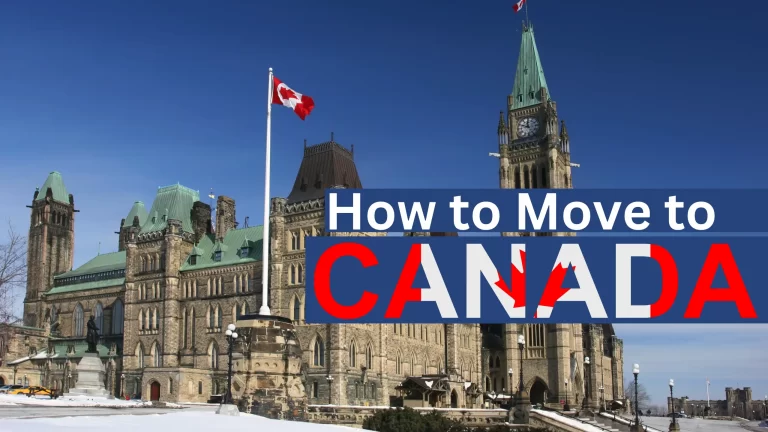Canada is one of the top destinations in the world for international travelers, students, and families visiting loved ones. Known for its stunning natural beauty, cultural diversity, and top-tier healthcare system, Canada attracts millions every year. For international visitors, Canada’s public healthcare does not cover foreign nationals, making Canada travel insurance a essentisl part of your travel planning in 2025.
Travel risks such as medical emergencies, flight disruptions, lost baggage, and even sudden illness due to changing weather conditions can add unforeseen costs to your trip. With visa regulations evolving and the cost of healthcare rising, choosing the right travel insurance policy for Canada is not optional—it’s a must.
Let’s break down how you can find the best travel insurance plan that suits your needs and keeps you protected throughout your Canadian journey in 2025.
Why Travel Insurance for Canada Is Essential in 2025
Many travelers underestimate the need for travel insurance, especially when visiting a country like Canada that is perceived as safe and well-organized. Unforeseen circumstances—ranging from flight cancellations and missed connections to sudden medical emergencies—can happen to anyone, regardless of planning.
In 2025, global climate events, post-pandemic travel protocols, and airline staffing shortages have made travel less predictable. Flight delays, weather-related disruptions, and even baggage losses have become more common. Moreover, Canada’s medical system, while top-tier, is extremely expensive for non-residents. Even minor medical procedures can cost hundreds to thousands of dollars if you’re uninsured.
Certain visa types, such as the Super Visa for parents and grandparents, legally require travelers to show proof of valid travel insurance with specific medical coverage thresholds. International students, digital nomads, and long-stay tourists are also encouraged—if not required—to carry comprehensive insurance policies that align with provincial guidelines.
Choosing Canada travel insurance in 2025 is no longer just a precaution—it’s an intelligent decision that offers both legal compliance and peace of mind.
Key Features to Look for in a Canada Travel Insurance Policy
When evaluating travel insurance for your trip to Canada, it’s essential to choose a policy that includes more than just basic coverage. Here’s what a well-rounded insurance plan should include in 2025:
1. Emergency Medical Coverage
This is the most critical part of any Canada travel insurance policy. It should cover doctor visits, hospitalization, ambulance services, emergency surgeries, and prescription medications. Some policies also include telemedicine, which can be helpful in remote areas or for minor consultations.
In 2025, the minimum recommended medical coverage is CAD 100,000–CAD 150,000, but travelers engaging in outdoor activities like skiing or hiking may need even higher limits. Always check for coverage of chronic or pre-existing medical conditions if applicable.
If your plan doesn’t offer direct billing with hospitals in Canada, you may have to pay upfront and file a claim later—so make sure the claims process is clear and accessible.
2. Trip Cancellation and Interruption Insurance
Even the most meticulously planned trips can be disrupted by illness, family emergencies, political unrest, or airline failures. With trip cancellation coverage, you’ll be reimbursed for non-refundable expenses, including airfare, hotel reservations, and tour bookings.
Trip interruption coverage kicks in after your journey has started. For instance, if a family emergency forces you to return home early or a snowstorm delays your flights, this insurance helps cover additional travel and accommodation costs.
In 2025, many plans also include coverage for cancellation due to COVID-19, government travel bans, or other infectious diseases—a essential factor for international travel.
3. Emergency Evacuation and Repatriation
This feature provides coverage for medically necessary evacuations due to serious illness, injury, or natural disasters. For example, if you’re hiking in Banff and sustain a serious injury that requires air ambulance transport, the cost can exceed CAD 50,000.
Additionally, if a traveler passes away during their trip, repatriation coverage covers the cost of transporting the remains back to their home country—a process that can be emotionally and financially draining without insurance.
Ensure that your Canada travel insurance plan includes emergency evacuation and repatriation as standard benefits, especially if you’re visiting rural or remote regions.
4. Baggage Loss, Delay, or Theft
Baggage delays are one of the most common travel headaches. Insurance coverage helps compensate for essential purchases like clothes, toiletries, and medications if your luggage is delayed or lost.
Theft or damage of your personal belongings is also covered under most policies. Be sure to check the maximum compensation per item and whether valuables such as electronics, jewelry, or sports gear are covered.
Some insurers now offer baggage tracking services, helping you stay updated in real-time—a helpful tool when traveling through busy airports like Toronto Pearson or Vancouver International.
5. COVID-19 and Infectious Disease Coverage
Though global lockdowns have ended, infectious diseases remain a travel concern in 2025. Some regions in Canada may still have temporary health mandates or quarantine protocols in place if outbreaks occur.
Choose a Canada travel insurance plan that covers medical treatment for COVID-19, PCR testing, trip interruption due to infection, quarantine accommodations, and cancellations linked to pandemic advisories. Some insurers now even offer telehealth consultations for symptomatic travelers.
Having this specific coverage gives travelers peace of mind that they’ll be protected against unexpected changes in health regulations.
Who Needs Canada Travel Insurance in 2025?
Your travel purpose plays a huge role in determining the right insurance plan. Here’s a detailed breakdown based on visitor type:
Tourists and Short-Term Visitors
Travelers visiting Canada for sightseeing or vacations typically need a short-term policy with comprehensive medical and trip protection. If your trip involves adventurous activities such as skiing in Whistler, hiking in Banff, or kayaking in Yukon, make sure you add adventure or sports coverage, as these are usually excluded from standard policies.
If you’re renting a car, consider adding rental vehicle insurance to protect yourself from liability or collision charges.
International Students
Many Canadian provinces mandate that students carry health insurance during their stay. Some universities include insurance in their enrollment fees, while others leave it up to the student. If you’re studying in Canada for 6 months or longer, look for a plan that covers:
- Routine doctor visits
- Mental health care
- Prescription drugs
- Diagnostic services
You may also need coverage that complies with provincial healthcare policies, such as those in British Columbia, Ontario, or Quebec. Make sure the provider is recognized by your institution to avoid enrollment delays.
Parents and Grandparents on a Super Visa
For Super Visa applicants, insurance is a legal requirement. You must provide proof of 1-year insurance coverage of at least CAD 100,000, fully paid before arrival. This rule is strictly enforced and helps ensure that elderly visitors are protected in case of medical emergencies.
Choose a Canadian provider experienced in Super Visa insurance, with direct billing arrangements with hospitals, refund flexibility (if visa is denied), and multilingual support. Some insurers even offer monthly installment plans, though full annual payment is still a requirement for visa approval.
Business Travelers
Business travelers often carry valuable equipment and cannot afford delays. A business-focused insurance policy should include trip delay reimbursement, electronics protection, third-party liability, and even legal support for contract disputes or accidents.
Some providers offer group policies for corporate travelers, which are both cost-effective and customizable based on the number of trips or employees.
How to Compare Travel Insurance Plans for Canada Effectively
With many insurance providers in 2025 offering seemingly similar policies, knowing how to compare them effectively can help you choose the best value for your money.
1. Look Beyond the Premium
Cheaper doesn’t always mean better. Evaluate the coverage limits, what’s included and excluded, and whether the policy supports cashless hospital networks. Some low-cost plans may appear attractive but leave you exposed to high deductibles and limited emergency support.
2. Understand the Exclusions and Conditions
Many claims are denied due to policy exclusions. Common exclusions include pre-existing conditions, drug or alcohol-related incidents, adventure sports, or mental health treatment. If you’re over 60, or if you have any chronic condition like diabetes, heart disease, or asthma, select a plan that offers a pre-existing condition waiver or dedicated senior plan.
3. Review Deductibles and Copays
The deductible is the amount you’ll pay out-of-pocket before your insurance covers the rest. Plans with low or no deductibles offer peace of mind, but higher premiums. Find a balance that suits your financial comfort in case of an emergency.
4. Evaluate Customer Support and Claims Process
Choose an insurance company with 24/7 multilingual support, a user-friendly mobile app, and transparent claim processing. Fast reimbursement and reliable assistance during emergencies make a significant difference when you’re in a stressful situation abroad.
Best Travel Insurance Providers for Canada in 2025
Based on coverage, reliability, and customer satisfaction, here are some of the top providers offering Canada travel insurance:
| Provider | Key Strengths |
|---|---|
| Allianz Global Assistance | Offers high-limit plans, excellent trip protection, and a global support network |
| Manulife | Top choice for Super Visa insurance and long-term visitors, with Canadian hospital partnerships |
| World Nomads | Flexible and adventure-friendly, ideal for backpackers and digital nomads |
| VisitorsCoverage | Comparison-friendly platform offering customizable plans for tourists, students, and parents |
| SafetyWing | Monthly subscription model, great for long-term remote workers and families traveling together |
Where to Buy Canada Travel Insurance in 2025
- Comparison Platforms: Websites like VisitorsCoverage, Squaremouth, InsureMyTrip, and Policybazaar allow you to compare plans based on price, coverage, and customer ratings. These sites often feature curated plans specifically for Canada travel insurance.
- Direct from Providers: You can buy directly from global insurers like Allianz, Manulife, Blue Cross, IMG, or Seven Corners, which offer country-specific coverage options.
- Travel Agencies: Many agencies now bundle travel insurance with package tours. These may offer better deals but check the terms carefully.
- Credit Cards: Some premium credit cards offer partial insurance for flight delays or lost baggage. These do not replace full Canada travel insurance—use them only as secondary coverage.
By understanding your needs, comparing plans wisely, and ensuring full coverage, you’ll travel with confidence, knowing you’re protected from the moment you arrive in Canada until your safe return home.
FAQs
1. Is travel insurance mandatory to visit Canada?
No, travel insurance is not legally required for all visitors. It is strongly recommended because Canada’s public healthcare system does not cover foreign travelers, and medical costs can be extremely high.
Exception: If you are applying for a Super Visa, travel insurance is mandatory with specific coverage requirements.
2. How much medical coverage do I need for travel insurance in Canada?
For most travelers, a policy with at least CAD 100,000–CAD 150,000 in emergency medical coverage is advised. If you’re traveling with seniors or planning activities like skiing or hiking, consider even higher coverage limits.
3. What does Canada travel insurance usually cover?
Standard policies typically cover:
- Emergency medical expenses
- Hospitalization and ambulance services
- Trip cancellation or interruption
- Lost or delayed baggage
- Emergency evacuation and repatriation
- COVID-19 or infectious disease treatment (in updated policies)
Always read the policy details to understand what’s included.
4. Does Canada travel insurance cover COVID-19 in 2025?
Yes, most updated travel insurance plans in 2025 include COVID-19 coverage, such as:
- Medical treatment
- Testing and isolation expenses
- Trip cancellations or delays due to infection
Be sure to confirm this before purchasing, as coverage varies by provider.
5. Can I buy travel insurance after arriving in Canada?
Some insurers allow it, but most require the policy to start before your departure or on the date of arrival. Delaying your purchase could limit your coverage or invalidate claims for pre-existing incidents.
6. Will travel insurance cover pre-existing medical conditions?
It depends on the policy. Some Canada travel insurance plans offer coverage for stable pre-existing conditions if they meet specific criteria (e.g., no changes in medication or symptoms within the last 90–180 days). Always disclose your medical history honestly and ask your insurer for a pre-existing condition waiver if needed.
7. Is travel insurance required for a Super Visa application?
Yes, the Super Visa program requires:
- A one-year travel insurance policy
- Minimum CAD 100,000 coverage
- Coverage for healthcare, hospitalization, and repatriation
- Proof of payment in full (not just a quote)
Without this, your visa will be denied.
8. How do I choose the best Canada travel insurance provider?
Compare providers based on:
- Coverage limits and benefits
- Exclusions and deductibles
- Claim process and customer reviews
- 24/7 emergency support availability
Use trusted comparison sites like VisitorsCoverage, InsureMyTrip, or Squaremouth for up-to-date plans and pricing.
9. Does Canadian travel insurance cover extreme sports or outdoor activities?
Not always. Many standard policies exclude high-risk activities such as skiing, snowboarding, mountain biking, or kayaking. If you plan to participate in such activities, look for an adventure travel add-on or a policy that explicitly covers sports-related injuries.
10. How do I make a claim on my Canada travel insurance?
To make a claim:
- Contact the insurer’s 24/7 emergency line immediately
- Gather and keep all documents (bills, prescriptions, receipts, reports)
- Fill out the claim form online or via email
- Submit it within the time frame mentioned (usually 7–30 days)
Most reputable insurers process claims within 5–15 business days, depending on documentation and claim complexity.






